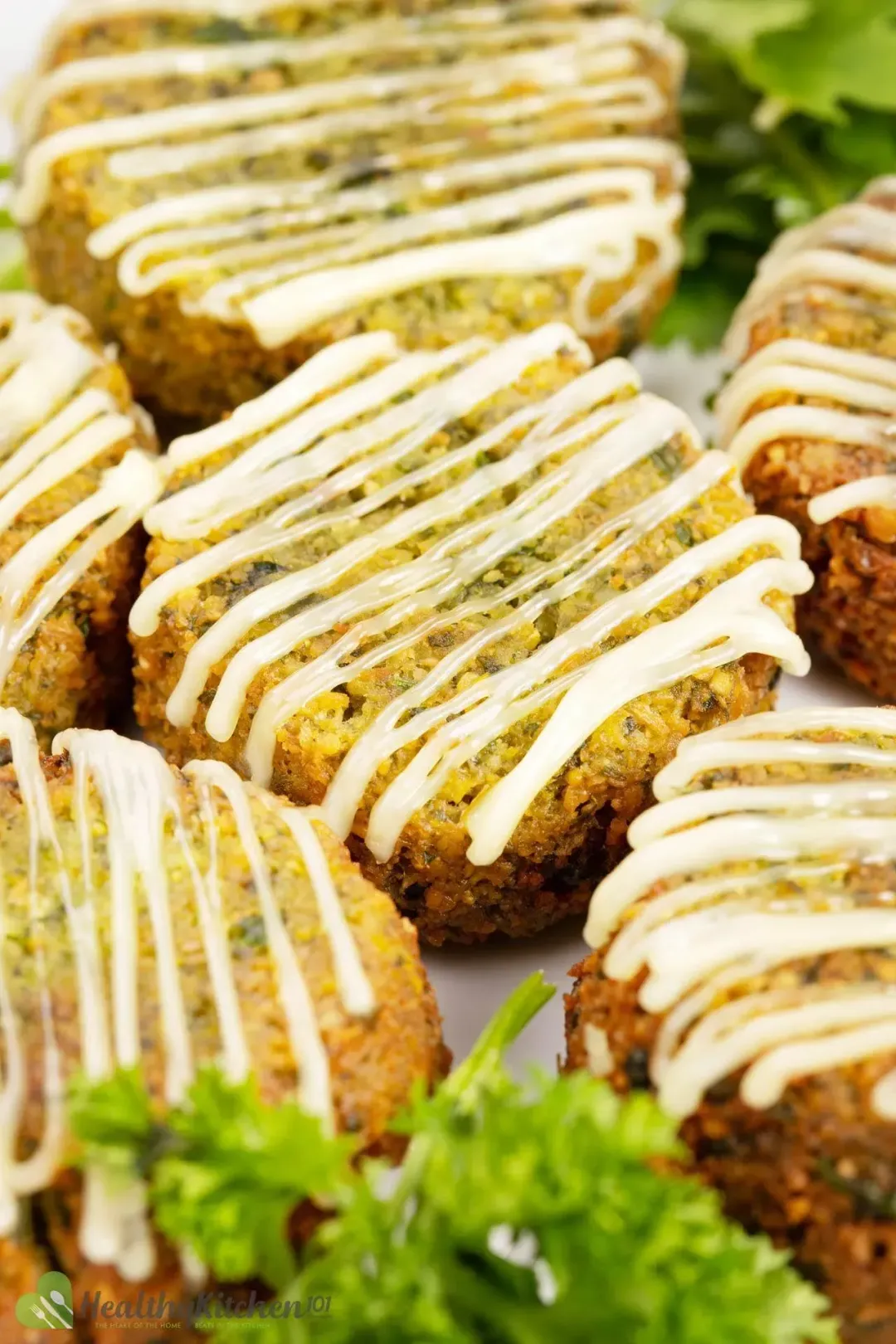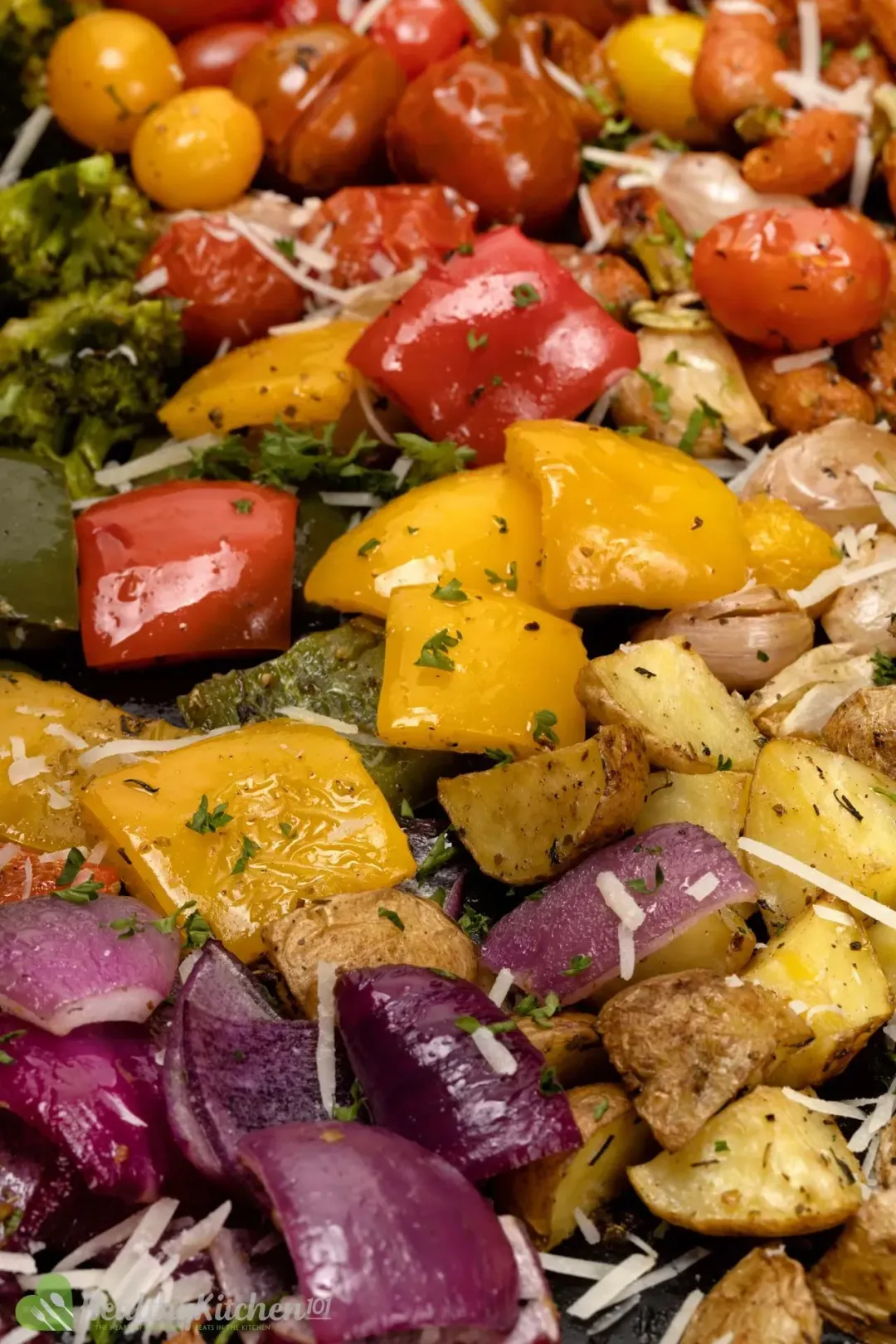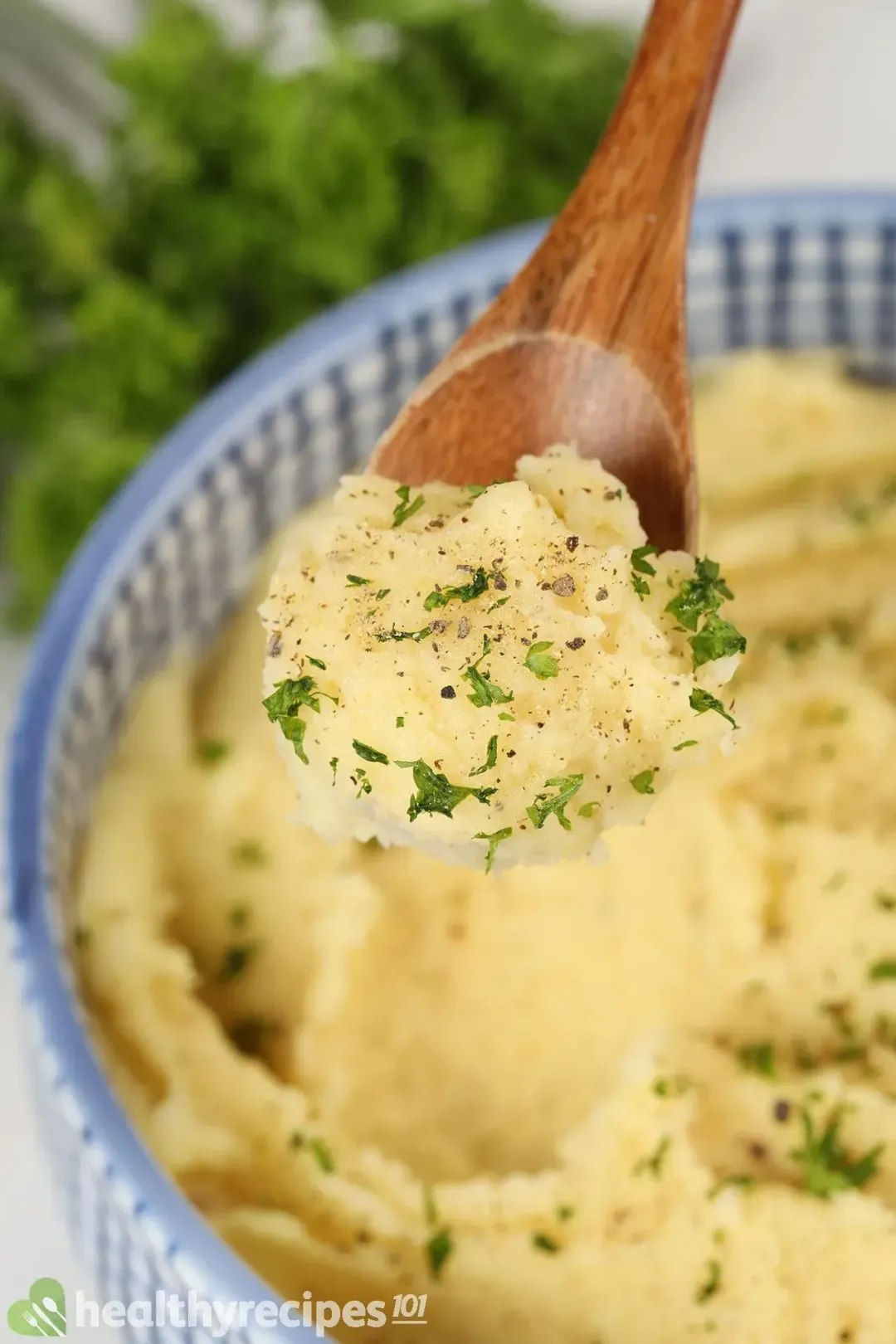This Falafel recipe makes the most authentic version of the Middle Eastern staple. The chickpeas might need to be soaked overnight prior to making, but the cooking is super quick and takes just three steps: blend, shape, and fry!
What’s even better is that our version is healthy.
What Is Falafel?
Falafel is an Egyptian dish that originated in Israel. It’s made by blending chickpeas with seasoning and herbs, then shaping into balls and frying to golden perfection.
This crispy treat can be served many ways.
Traditionally, falafel is put into pita bread along with chopped vegetables and sauce. They can also be served as finger food at parties, and in my experience, they deplete fast!
In this recipe, we’ll show you how to cook falafel as well as what to serve with it.
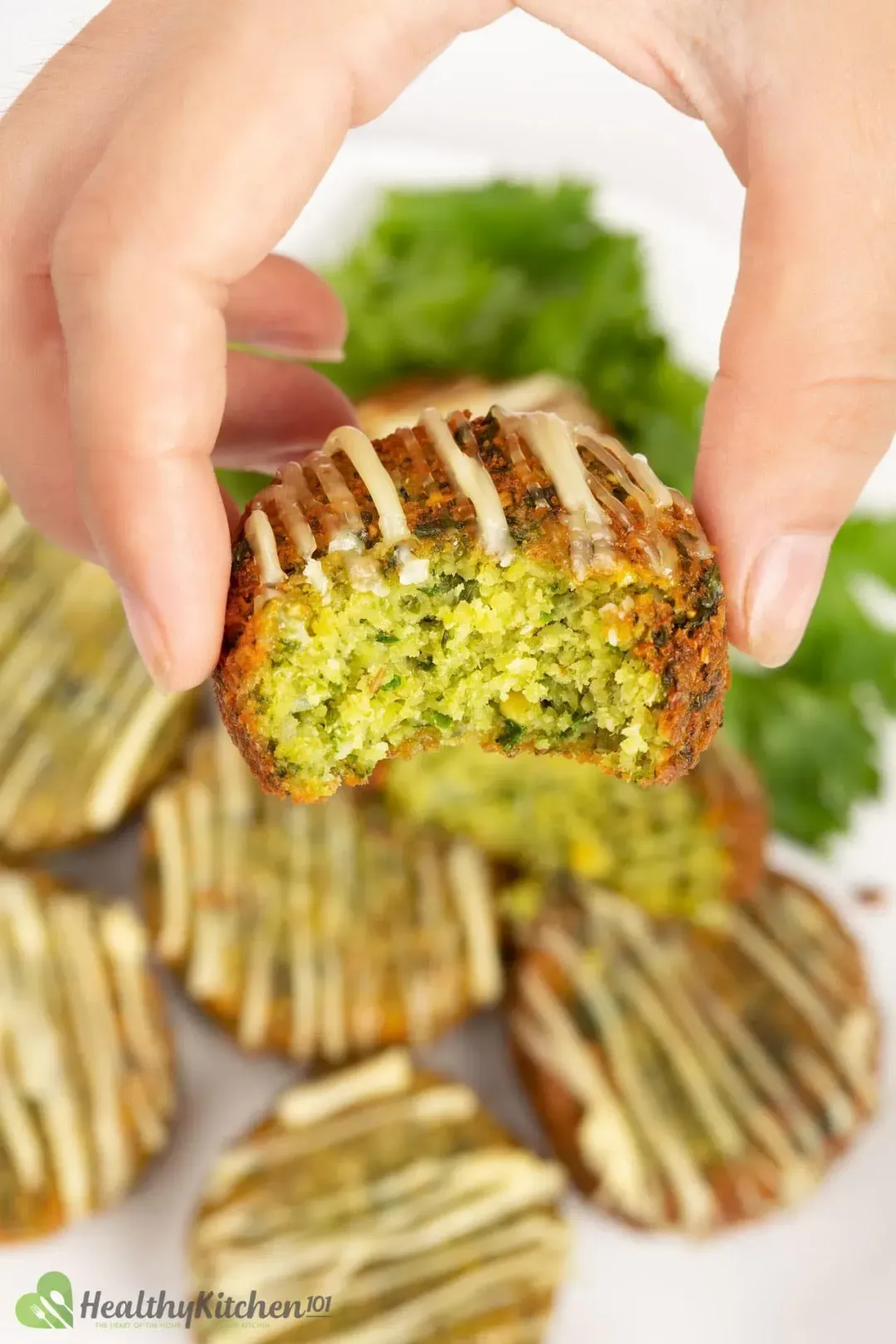
1. Is Falafel Vegan?
Falafel in pita bread is a yummy vegan dish. Chickpeas are packed with protein, so it is a vegan-/vegetarian-friendly alternative to red meat or poultry.
However, the dipping sauce isn’t vegan as we’re unable to find a vegan alternative to mayonnaise or Greek yogurt. You can have falafel as-is if you want a vegan meal.
2. Is Falafel Gluten-Free?
Our recipe isn’t gluten free because we used all-purpose flour as the binder for these falafels. Gluten is a protein that exists in flour made of certain grains, including all-purpose flour.
To make gluten-free falafels, you can substitute the flour with cornstarch.
Is Falafel Healthy?
Falafel is one of the healthiest dishes to include in your eating routine.
1. Protein
For starters, the main ingredient in falafel is chickpeas, an accessible source of protein for vegetarian dieters. There are 20 grams of proteins per 100 grams of chickpeas, nearly what 100 grams of chicken breast provides.
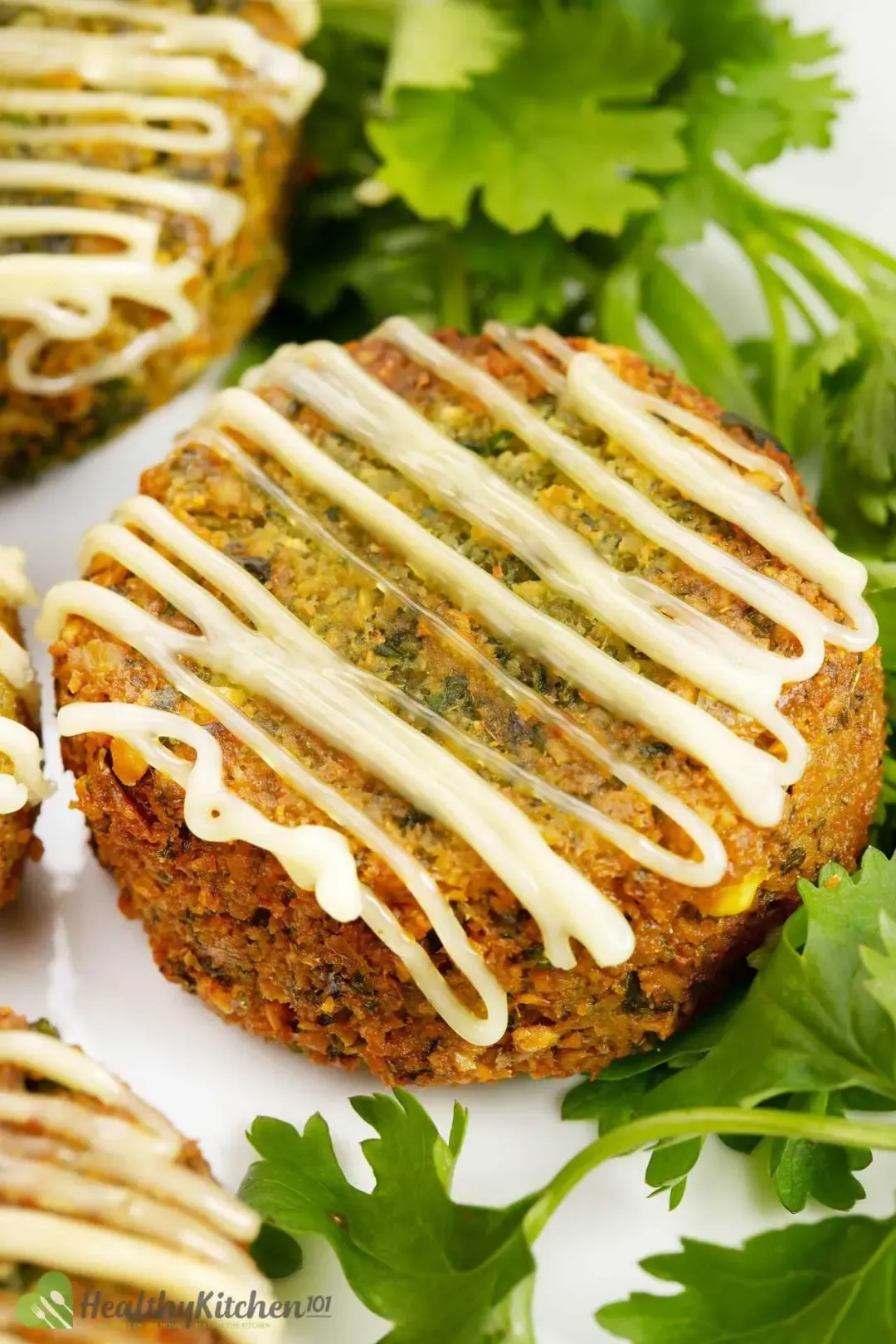
2. Carbohydrate
In weight, chickpeas are 63% simple and complex carbohydrates.
Along with the carbs comes an impressive amount of fiber— 12% in weight. Fiber helps your digestive system digest carbohydrates slower, which prevents blood sugar spikes.
For this reason, chickpeas are considered a low-glycemic food, along with other healthy foods such as fruits, veggies, legumes, etc. At the other end of the spectrum are foods made of refined carbohydrates/simple sugars, which are generally bad for you.
Considering falafel is little more than chickpeas with herbs and seasoning, you can say falafel is packed with a healthy amount of carbs, proteins, and fibers.
3. Calorie
With 12% of its weight being fiber, chickpeas have a low-calorie density. They can fill your stomach even though the calories consumed aren’t significant.
Thanks to this, each serving of our falafel recipe yields 255 calories, and that’s because of the dip— mayonnaise. Without mayo, the calories drop down to 185, and it comes in two large pieces.
If you were to bake/use an air fryer, two falafel balls only contain 120-140 calories in total. Cooking with little oil can significantly reduce excess calories coming from residue oil sneaking into your food.
However, excess calories aren’t necessarily excess as long as you’re watching them. 255 calories are within our meal plan, and they are delicious, too.
Ingredients You'll Need
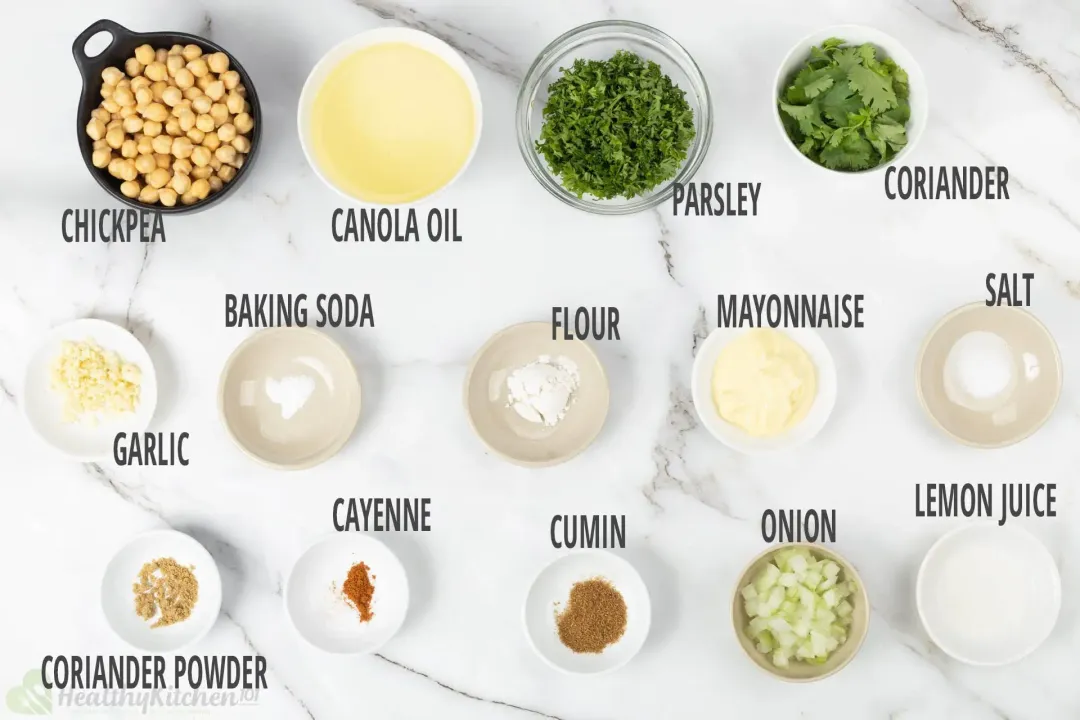
1. Chickpeas
Since the legume is our falafel recipe’s most important ingredient, we want to be sure nothing goes wrong. Saying this also means we have done the wrong thing.
There are two kinds of chickpeas, fresh and in cans. The canned version is more accessible, so we went for it, and the result was ugly— they fell apart.
We later discovered that canned chickpeas frequently do this. People often soak fresh chickpeas overnight and make falafel the next day.
If you want to opt for the canned ones, we have a detailed guide on using them in the FAQs below.
2. Aromatics
Into the food processor come parsley and coriander. We think a variety of these herbs really enhance the falafel’s freshness.
The necessities— onions and garlic— go next. So far, the ingredients used can be eyeballed according to your taste, so go for however much you want.
3. Seasonings
Falafel’s seasonings are really simple, too: cumin, cayenne, black pepper, salt, and lemon juice.
Cumin brings out the signature aroma of Egyptian dishes. A little goes a long way, though, so you might want to go easy on the cumin.
Cayenne and black pepper decide the amount of heat you’ll experience. You can either make it mildly hot by following our recipe, or go wild.
Since we’re trying to consume less sodium, we recommend you go with the amount of salt we listed.
To round off the rich flavors, a dash of lemon juice is added to brighten the dish.
Finally, baking soda and flour are added to the mix to ensure the fluffy interior is coated with a crisp outer layer. As mentioned, you can use cornstarch instead of flour to make gluten-free falafel.
Sauce
No matter how it’s served, falafel isn’t complete without an accompanying sauce. Besides a simple mayonnaise, here are some fancier sauces you can make right at home:
1. Yogurt Dipping Sauce
The best thing about this sauce is that you don’t need to do much with the ingredients.
Begin by chopping up a handful of cilantro and parsley. Place them in a bowl and mix in ½ cup of Greek yogurt, lemon juice, lemon zest, salt, and pepper.
If you prefer a sauce that comes with heat, feel free to add red pepper flakes/ jalapeños.
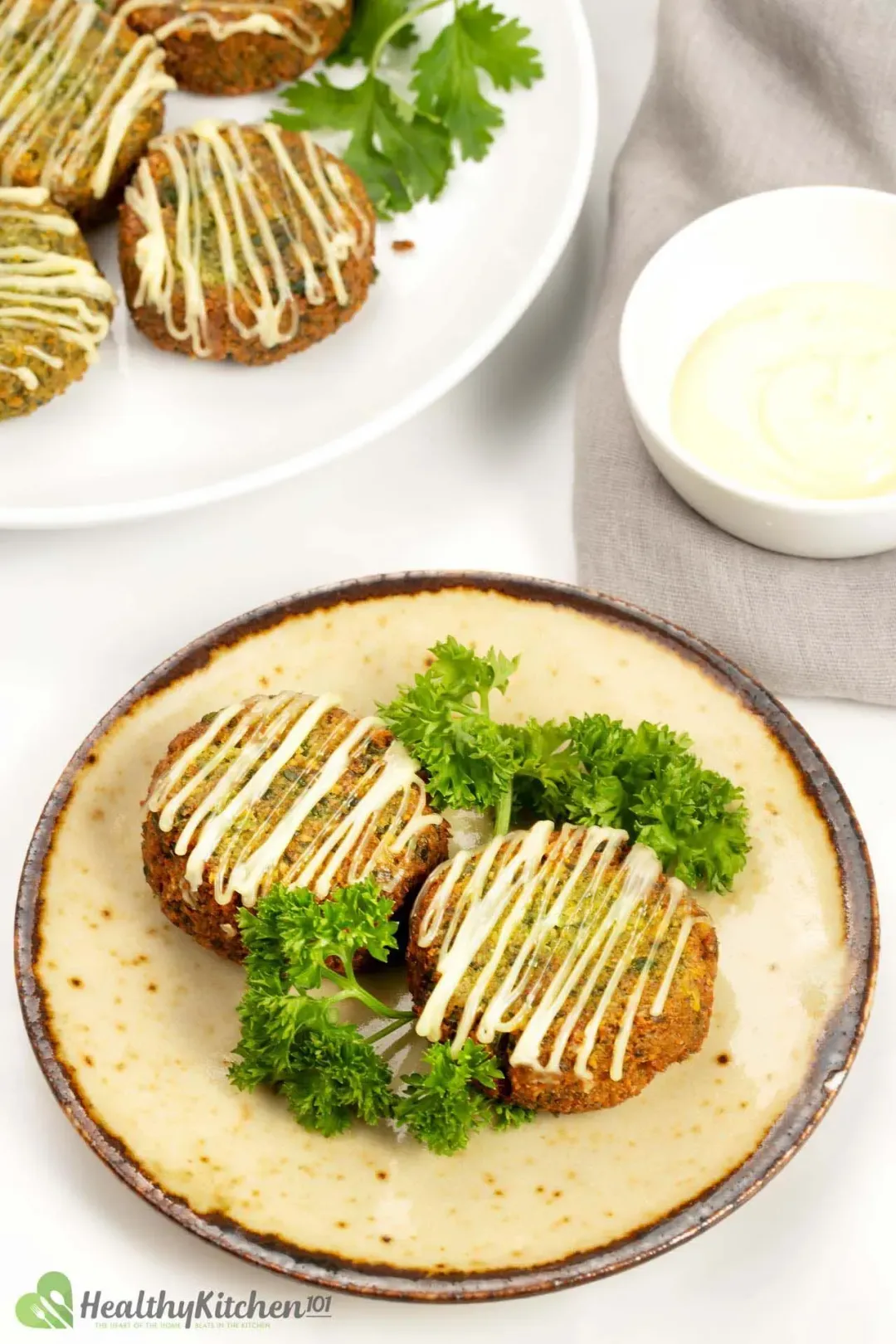
2. Tahini Sauce
The main component of this nutty, creamy sauce is tahini paste— a thick, oily paste made of ground sesame seeds. The paste contains healthy fat, so tahini is considered a healthy dip.
To make the sauce, first, dilute 1 tbsp of the paste with 1 tbsp lukewarm water. Then, season it with minced garlic, lemon juice, chopped parsley, salt, and pepper, all to your taste.
The final product should have an earthy aroma, a creamy texture, and a garlicky, nutty taste. Thanks to the chopped parsley and lemon juice, it is also really fresh and bright.
3. Tzatziki Sauce
Did you know that cucumbers can be turned into a refreshing dip? All you need are ingredients you probably have in the pantry and a mixing bowl.
To the bowl, add ½ cup grated cucumbers, ¼ cup chopped dill, ½ cup Greek yogurt, 2 tbsp olive oil, and 2 tbsp garlic. Season with salt and lemon juice to taste, and a bright, fresh dip is born.
What to Serve with
This versatile food can be served with many things:
1. Salads
Serving falafel with pita can make a wholesome, but pretty dry meal. For this reason, a salad on the side can be of good use.
There’s a variety of fancy salads (and we have plenty of those!), but for this dish, sticking to simple options is best. A tangy, bright Greek salad would do, which takes around 15 minutes to prepare.
2. Tacos
Taco shells are a lower-carb alternative to pita bread, which is often served with falafel. Try falafel tacos and you may never go back!
3. Hummus
Belonging to the same cuisine, hummus and falafel are often served together as finger food. Hummus is also made of chickpeas, which is a delicious dip for crunchy carrots and celery.
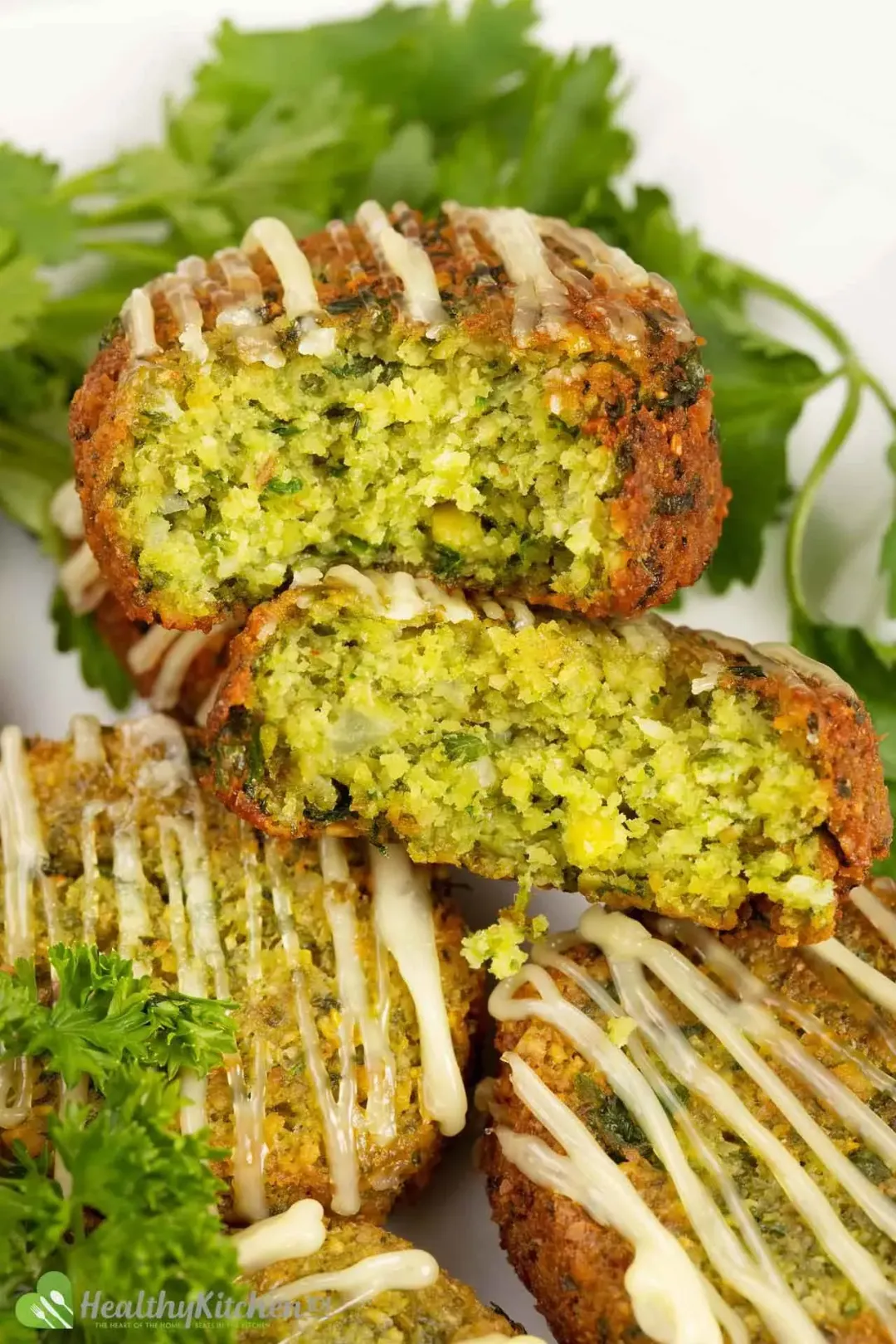
You May Also Like
- Twice Baked Potatoes Recipe
- Instant Pot Scalloped Potatoes Recipe
- Gnocchi Potato Recipe
- Air Fryer Hash Browns Recipe
Falafel Recipe
This falafel recipe makes healthy and crunchy falafel, a perfect snack that makes parties or reunions warm and intimate. Make some and the bowl should be empty in seconds.
- cook TIME 10 mins
- prep TIME 30 mins
- total TIME 40 mins
- COURSE Side Dish
- CUISINE Middle East
- SERVINGS servings
- CALORIES 255 kcal
INGREDIENTS
- 4 oz dry chickpeas (soaked overnight)
- 1.4 oz onion (chopped)
- 1/2 cup parsley (chopped)
- 1/4 cup cilantro (chopped)
- 1 tbsp garlic (minced)
- 1/2 tbsp all-purpose flour
- 1 tsp lemon juice
- 1/4 tsp salt
- 1/2 tsp ground cumin
- 1/4 tsp ground coriander
- 1/8 tsp baking soda
- 1/16 tsp cayenne
- 2 cups canola oil (*)
- 3 tbsp Japanese mayonnaise
INSTRUCTIONS
Wash 4 oz dry chickpeas and separate their skin. Remember to soak the chickpeas overnight or you won’t have falafel today!
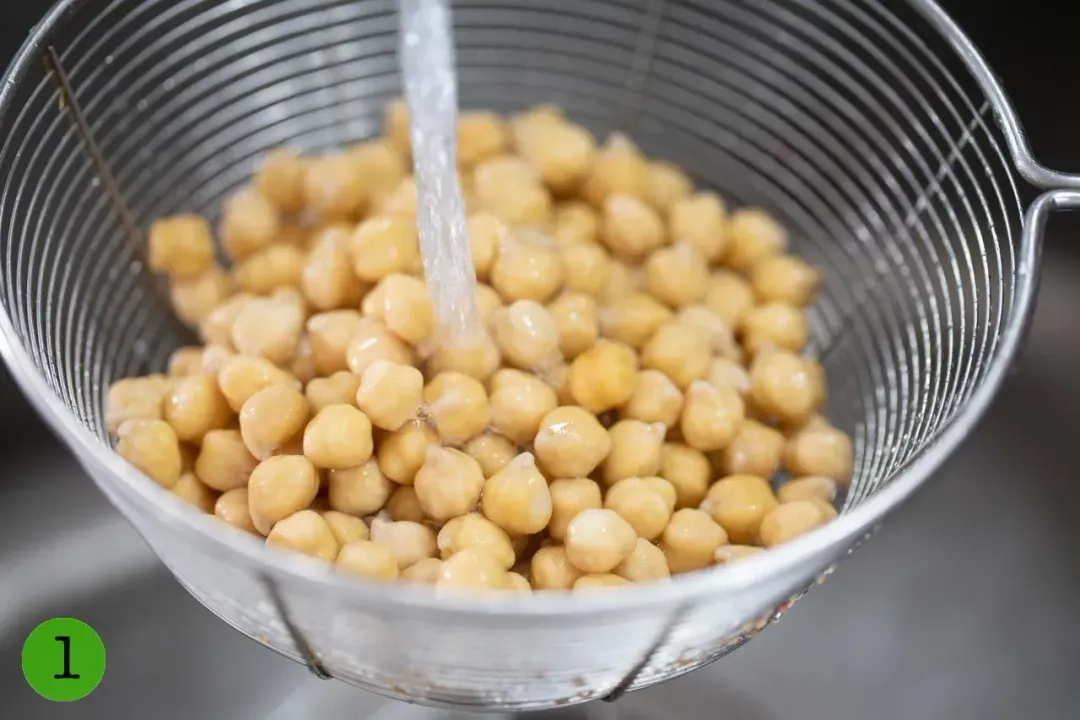
Blend 1/2 cup parsley and 1/4 cup cilantro finely. Add 1.4 oz onion, 1 tbsp garlic, seasonings (1/4 tsp salt, 1/2 tsp ground cumin, 1/4 tsp ground coriander), 1/2 tbsp all-purpose flour, 1/8 tsp baking soda, 1 tsp lemon juice, 1/16 tsp cayenne and blend. Add soaked chickpeas and blend. Scrape down the sides to get any big chunks at the bottom, and blend until there are no more big chunks.
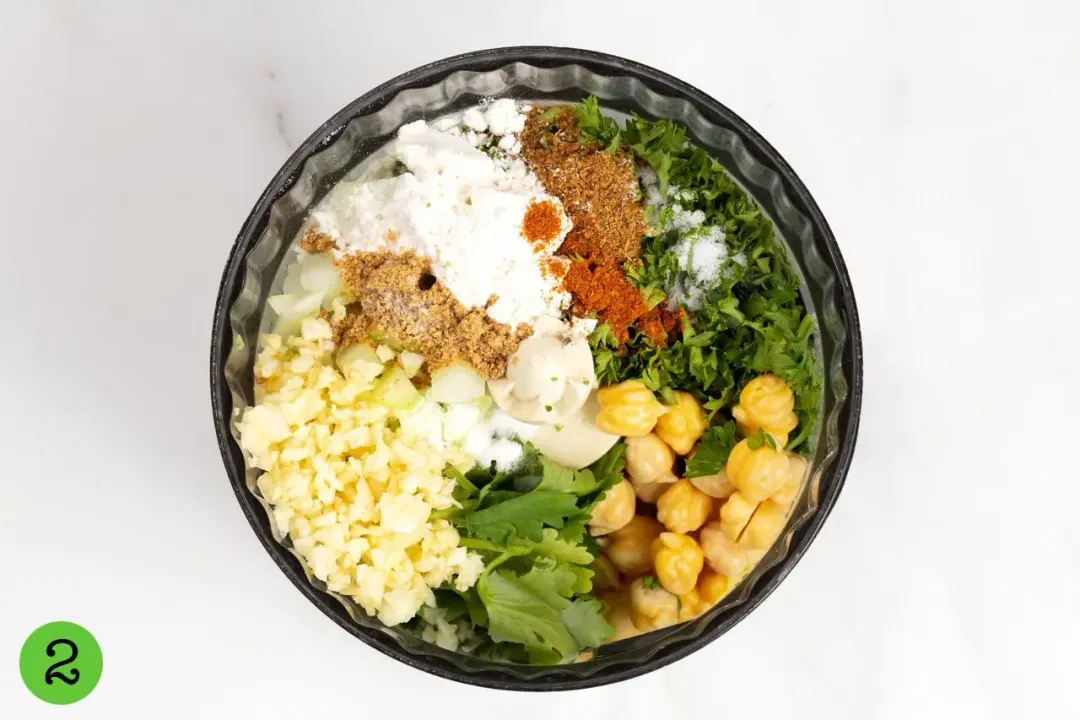
Divide the mixture into eight equal parts. Use your hands to form eight balls. Place them in the freezer for half an hour before frying.
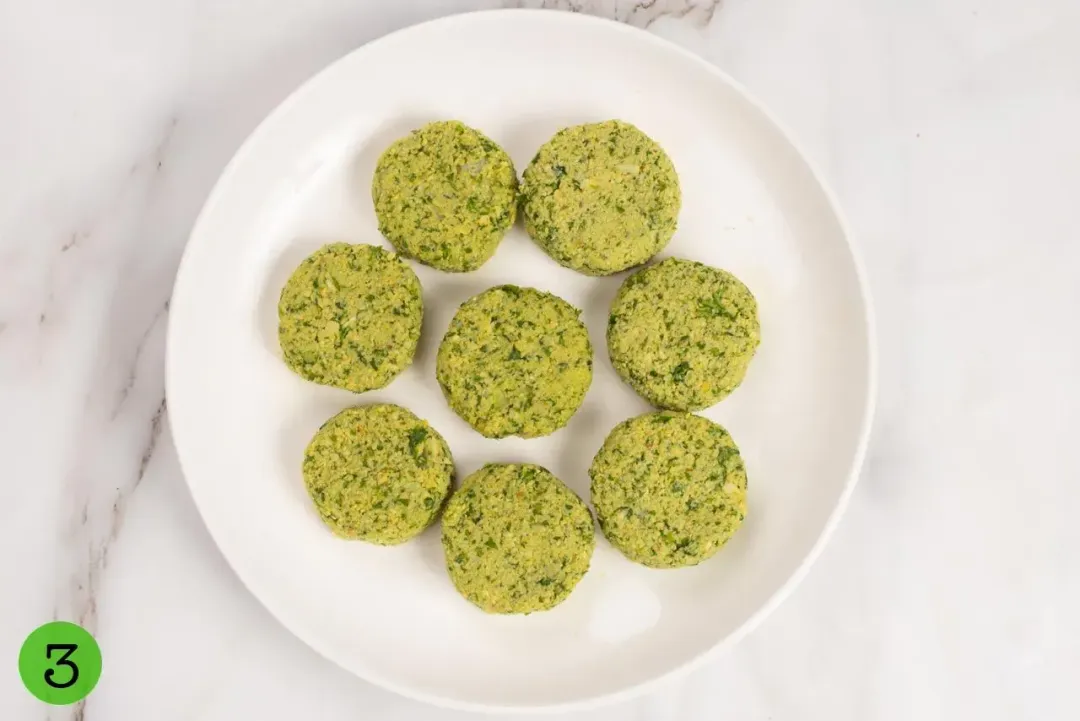
Heat a pot of 2 cups canola oil over medium heat for 5 minutes, then turn the heat to low. Fry the falafel until evenly golden brown, then take them out and place on a rack or paper towel.
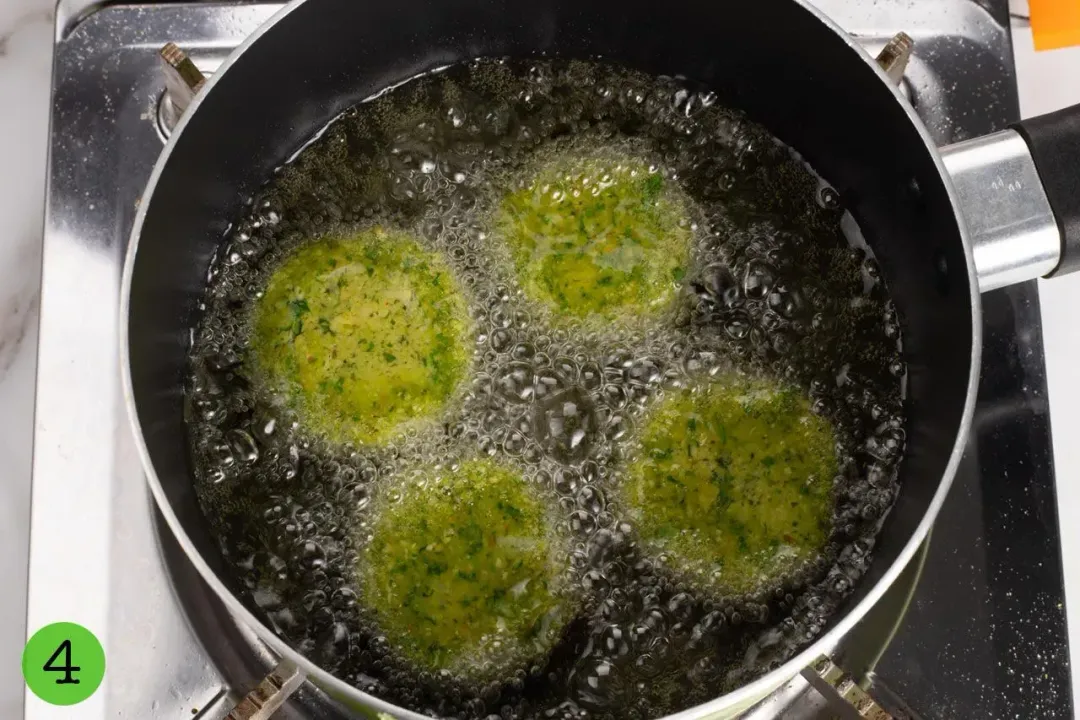
Serve with mayonnaise or homemade dipping sauce.
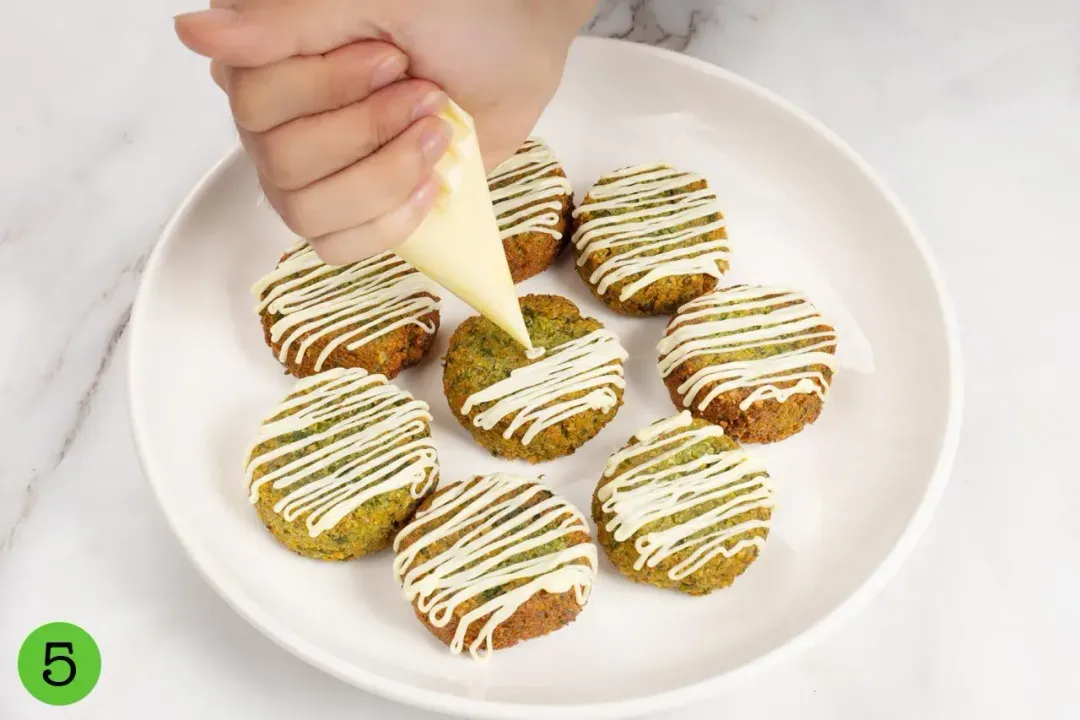
(*) Only part of the oil will end up in the final product, and we have calculated nutritional values based on that amount. The whole amount is needed for frying the falafel, but what actually ends up being consumed is 1.75 tbsps of canola oil for four servings.
NUTRITION
Tuyet Pham
Head Chef, Culinary ConsultantLuna Regina
Writer, AuthorLizzie Streit, MS, RDN, LD
Nutrition Reviewer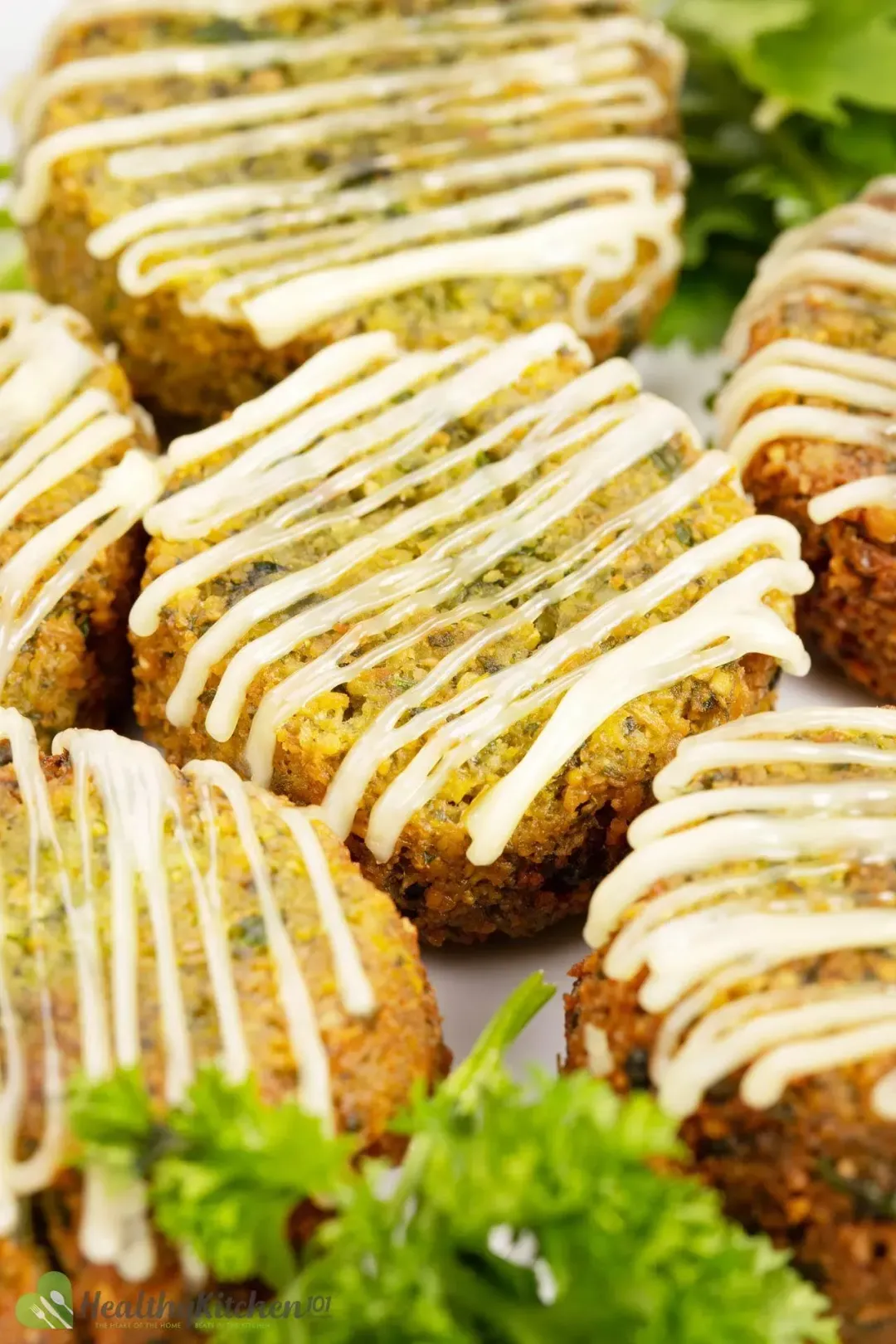
- Liz
Yum! I love falafel and yours are picture perfect! Thanks for all the excellent tips!
- Luna Regina
Thanks for stopping by, Liz! I really am looking forward to seeing your very own Falafel! If you do make some, feel free to share the pics with me, okay? 😀
- Cindy B
I hope to make this with gluten free flour!! Looks good! Gluten is a protein made up of 2 peptides. People with Celiac disease react to the peptide glutenin ( and other things in wheat) So not kneading it doesn’t make it safe.
- Valentina
YUM! I love falafel and this whole spread looks divine. I like the “pain in the pan” — that’s cute! I even like hummus with my falafel!
